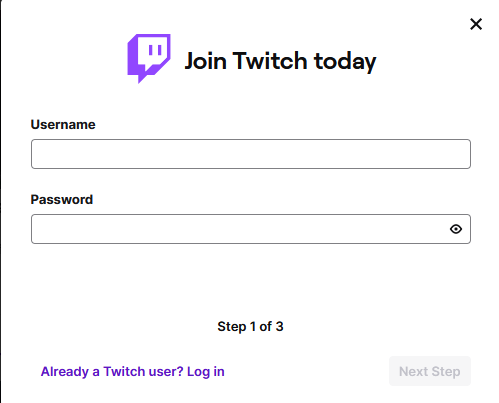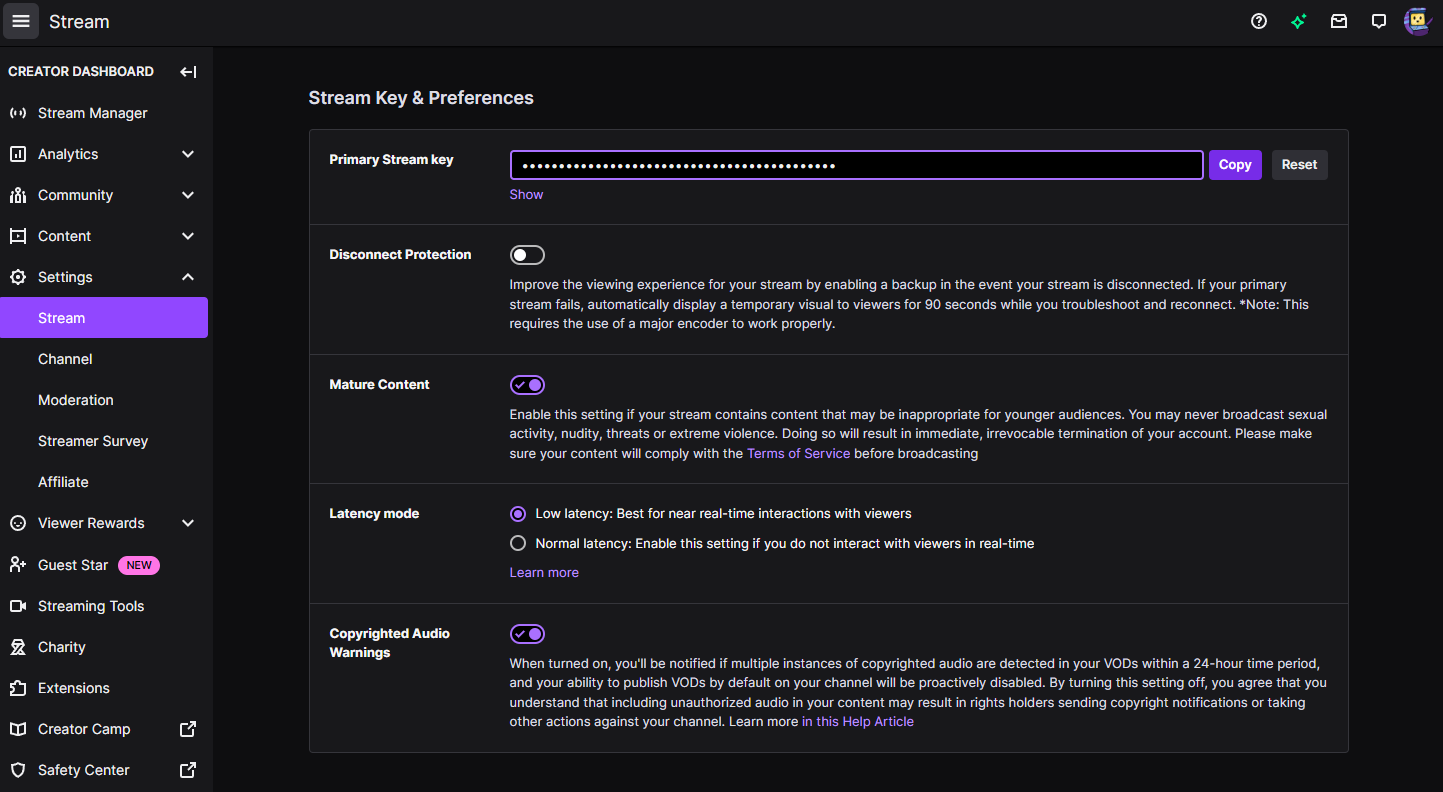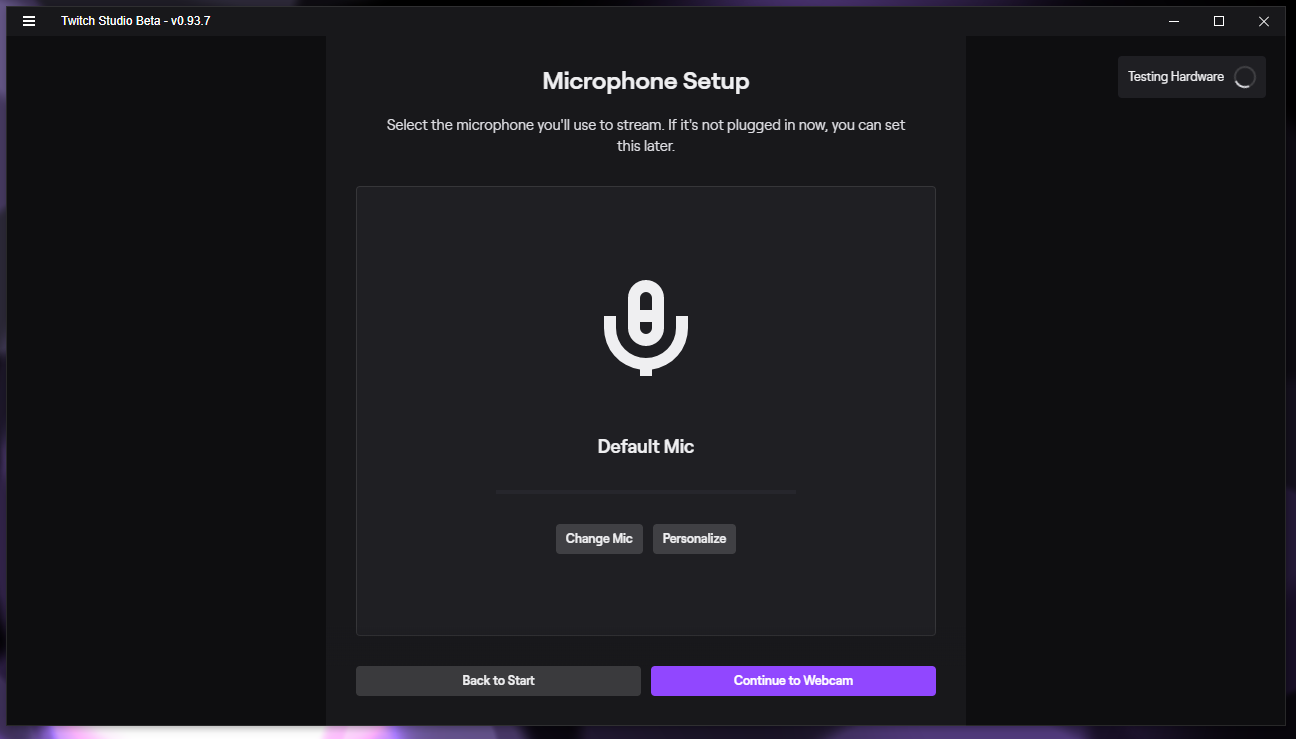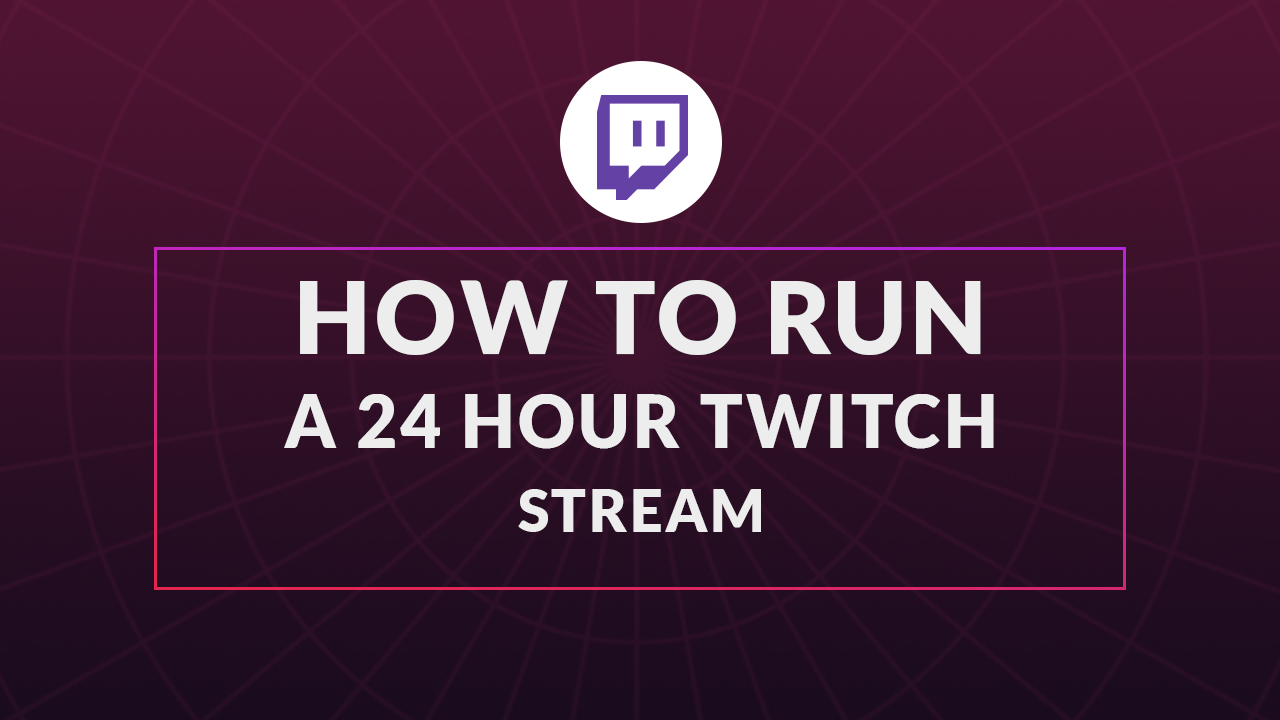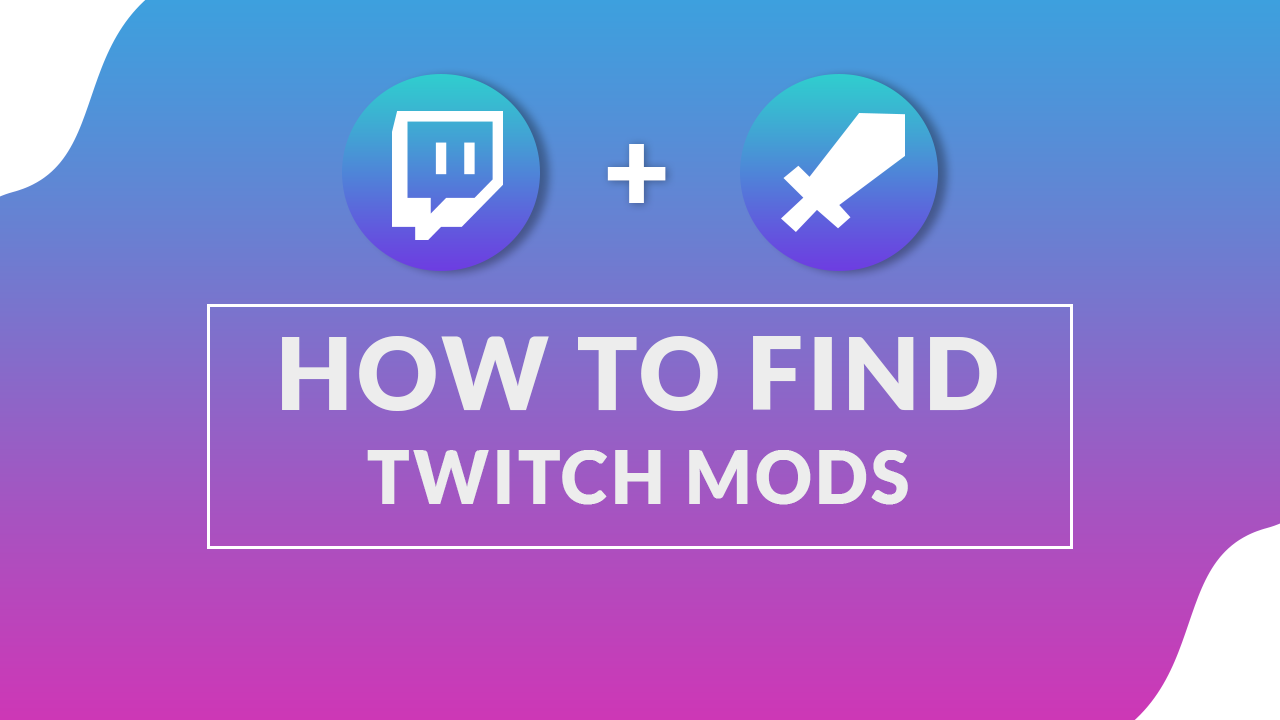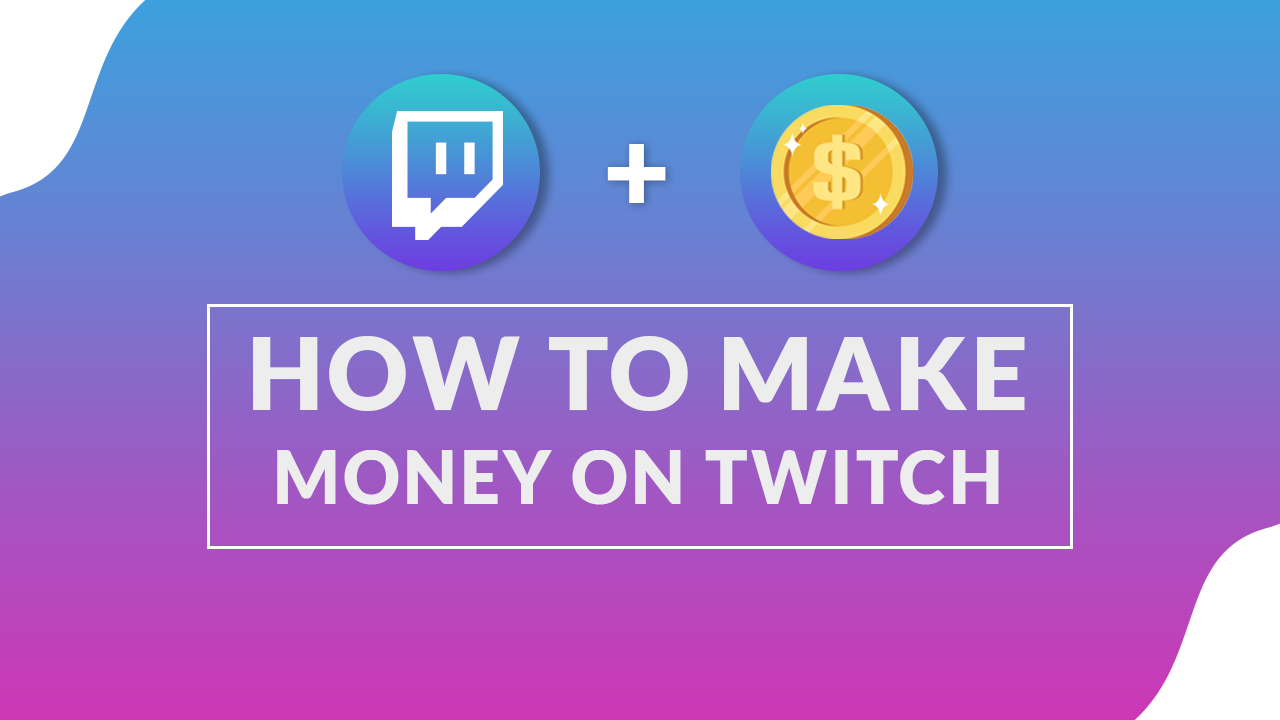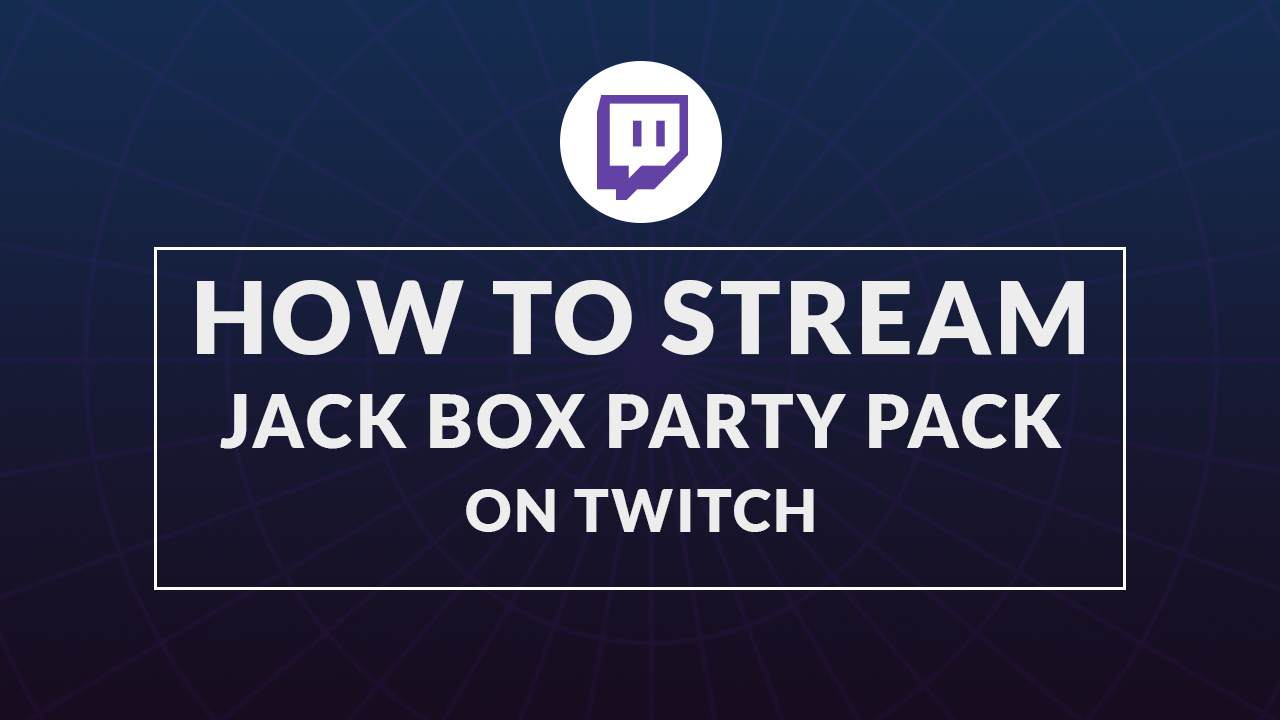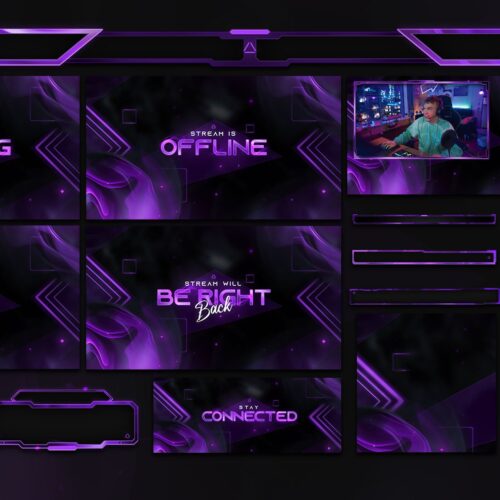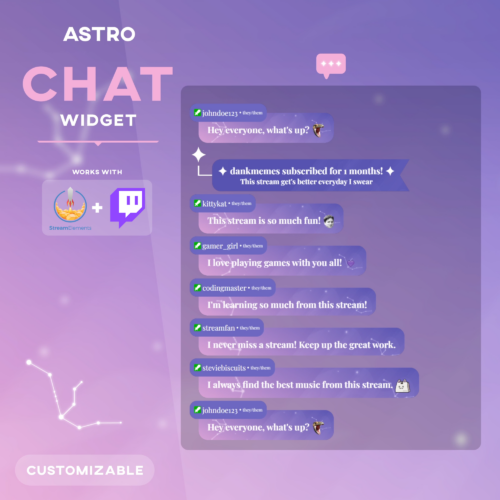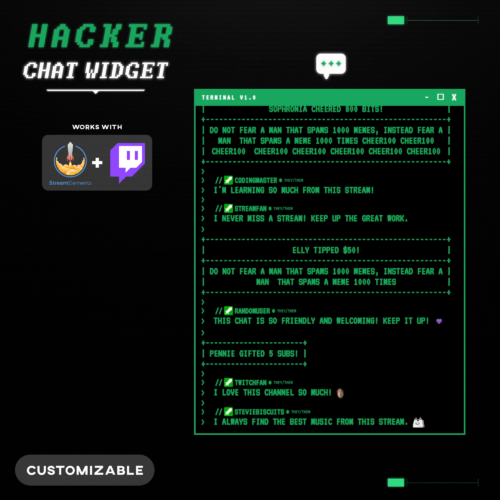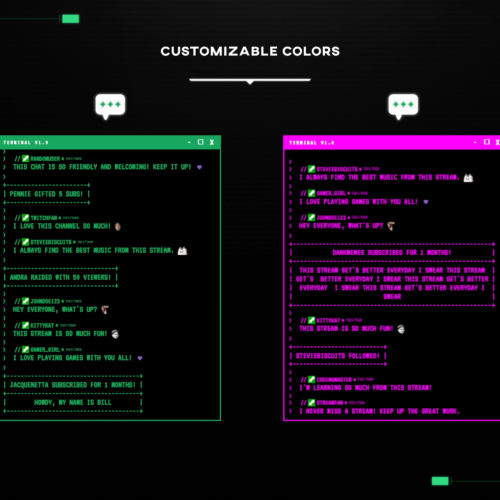No products in the cart.
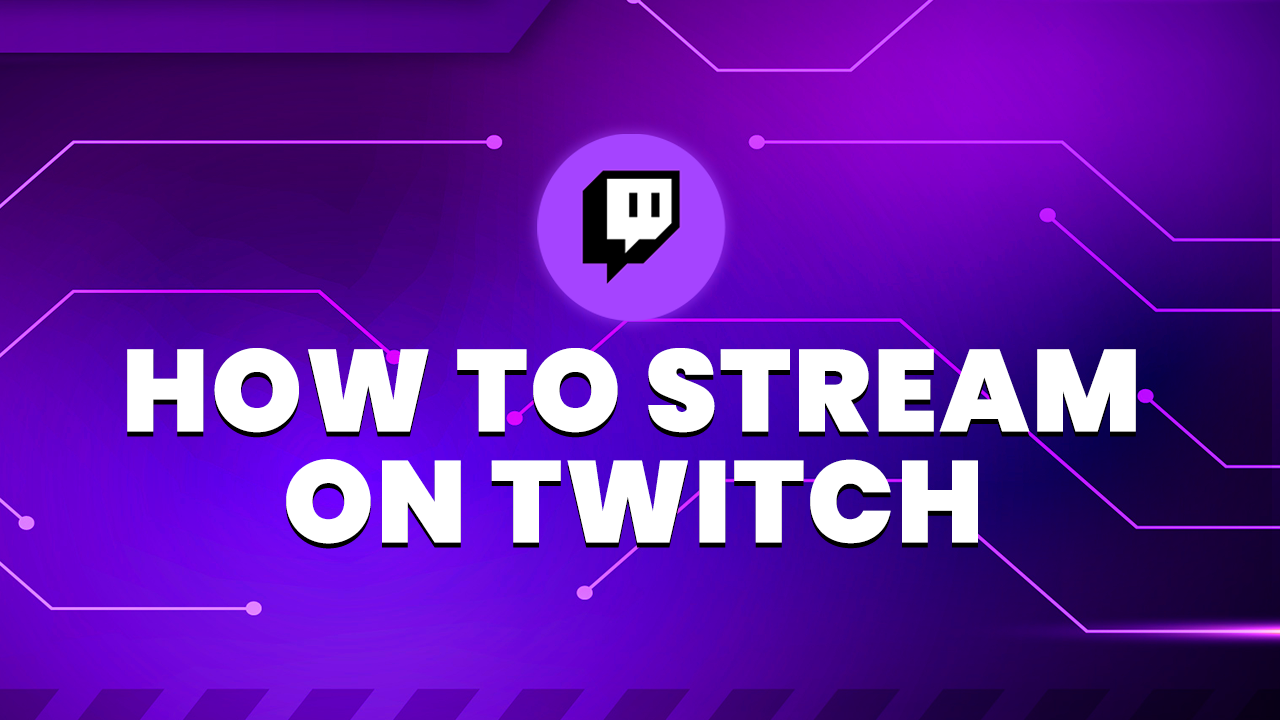
How to Stream on Twitch : Full Guide 2023
- September 29, 2023
- by Ben Price
Since its launch in 2011, Twitch has grown to become the largest streaming platform in the world. With an average monthly viewership of 140 million users as of 2023, the site remains a great platform for streaming live content. But because of its massive size, Twitch can also be a difficult platform for getting noticed, and getting a channel set up can be intimidating for those who have never created video content before.
Thankfully, getting started isn’t as difficult as it might seem to outsiders – by following the necessary steps, streaming on Twitch is actually a pretty straightforward process. Here’s our lengthy guide on how to stream on Twitch.
Set Yourself Up for Success
Before you begin streaming on Twitch, it’s very important to educate yourself a bit about the platform, understand what makes a successful streamer, and some key strategies that you can implement in order to find success.
While we have an entire guide dedicated to this subject, here’s a brief run-down of some good practices that we recommend you try, as well as practices to avoid:
- Obtain the Necessary Equipment – In order to stream properly, you’ll need to find the proper equipment. This means a decent microphone, webcam, and gaming rig if you plan on streaming off a PC. Additionally, if you’re a console gamer, you’ll probably also need to invest in a game capture card. If you’re worried about this being too costly, don’t worry – it’s possible to invest in all of these without completely breaking the bank!
- Create a Schedule – In order to garner a following on Twitch, viewers need to know when you’re going to be live. After all, how will anybody know when to watch you if you don’t even have a clear schedule set? We recommend setting a schedule as soon as possible and then do your best to stick with it. It’s okay to change it if things just aren’t working for you, as long as you have some consistency.
- Play Games that you love – The key to streaming great content is to do things on stream that you actually enjoy. Assuming that you plan on live streaming games, we recommend that you only play games that you truly love. Many new streamers make the mistake of chasing after the latest trends by playing the biggest and most popular games. We advise against this – play games that you love and have the most fun with, and viewers will notice! This will improve your chances of getting fans.
- Be Your Authentic Self – When you go live, always do so as your true, authentic self. If you fake niceness on camera, others are bound to notice it. By showing your true personality on screen, you’ll be more likely to connect with others and therefore attract others to your stream by feeling more relatable.
- Learn how to use streaming software – Before hitting that “Go Live” button, it’s very important that you understand how to fully utilize your streaming software. If you don’t do your research and understand how streaming software works, broadcasts can quickly become very frustrating.
- Dress up your streaming setup – Before hitting that live button, think about what your setup looks like. Are you streaming in your bedroom, with your messy unmade bed in the background? Is that one stain on the wall visible within the frame? These are all things that you should think about before going live! Just as a theater director dresses the stage before a performance, you too should set up your streaming setup. In a way, every broadcast is a performance so you should take pride in it! If you live in an apartment and have no other option than to stream in your bedroom, then maybe consider purchasing a room divider or a green screen. These options are fairly affordable, and can go a very long way to improving your stream!
- Invest in great stream overlays – While your physical streaming room should look presentable, so should your virtual streaming setup. The best way to create a great looking stream is by investing in a stream overlay. Stream overlays can be purchased through individual sellers on sites like Etsy and Fiverr, online stores such as Hexeum. Alternatively you could try making them for yourself if you’re artistically inclined enough.
- Promote Your Channel – It’s 2023 and simply going live isn’t enough to gain new viewers on Twitch. You’ll need to learn how to reach a wider audience, both on and off the platform. This involves being active and engaging on different social platforms. You’ll also need to learn how to create both short form and long form content.
These are just some of the many strategies that we recommend new Twitch streamers implement in order to maximize their chances to gain a following on the ever-growing platform. And while none guarantee success, they may make it easier to grow, and aid you to become the best streamer that you can be.
Without further ado, let’s jump into how you can stream on Twitch, starting with how to create an account on Twitch.
Creating a Twitch Account
Before doing anything else, you’ll first need to create an account on Twitch.
- First, head to Twitch.tv. Go to the top right corner of the screen and select the purple “Sign Up” button.

- Enter a username and password of your choice. Make sure that you haven’t already created an account with your desired email address.
- Enable two-factor authentication. This is required if you want to broadcast on Twitch for security purposes. In order to do so, you’ll need to first verify your email address in the Twitch Security and Privacy settings and then turn on 2FA. You’ll also have to save your phone number to your account as well if you haven’t already done so.
- First, head to Twitch.tv. Go to the top right corner of the screen and select the purple “Sign Up” button.
Twitch Streaming Software

Having a Twitch account is only half of what’s needed before you’re ready to stream. Next, you’ll need to download and set up streaming software. If you’re unfamiliar, streaming software is the tool that streamers use to broadcast themselves onto streaming platforms. The three most popular streaming software applications are Streamlabs, OBS, and Twitch Studio.
While all three options are great, they all have their own pros and cons – here’s a quick breakdown of each of them.
Streamlabs

Streamlabs is a program aimed directly at gamers and content creators, with features such as a built-in Twitch chat plug-in, pre-made alerts and overlays, modding tools, and other helpful features. The overall setup process for Streamlabs is overall very quick and easy, although it isn’t without its downsides as well.
The biggest downside to using Streamlabs is the program’s RAM storage usage. With so many features packed all within one software tool, Streamlabs weighs heavily on most users’ PCs. This can cause issues for streamers, anything less than high-end gaming PCs. Another downside of Streamlabs is that the tool is clearly intended for live streaming video games, and nothing else – this means that all of the tools and features cannot be removed or customized much. Those who are looking for an all-in-one streaming application are better off with OBS.
Pros
Simpler to Use: Those who are less tech-savvy may prefer Streamlabs, as it features an easy-to-use interface and various quality-of-life improvements.
Easy to Set Up: Streamlabs is very easy for newcomers to set up, with the entire setup process taking only mere minutes. With all of the necessary features already included right out-of-the-box, setting this up couldn’t be easier.
Cons
More CPU Usage: The biggest drawback of Streamlabs is how CPU-intensive it is. With all of the included features, widgets, and overlays included within Streamlabs’ program, Streamlabs puts a lot more strain on one’s gaming rig. This alone makes Streamlabs pretty much unusable on many PC rigs, if users lack powerful enough systems.
Features Locked Behind Subscription: While Streamlabs offers plenty of great features such as custom stream themes, multistreaming, and the ability to make and sell merchandise, all of these features and more are locked behind a subscription fee. And at $19 per month, it isn’t exactly affordable for everyone.
OBS

Also known as Open Broadcast Software, OBS Studio is a popular live streaming program allowing users to broadcast live on Twitch or other streaming platforms. While OBS is much older than other broadcasting software, the app is much more customizable and is a much more general solution for live streaming. It can do everything ranging from streaming games, to live events, to webinars, and work conferences. Additionally, the app can be highly customizable and fit just about anybody’s use case.
But at the same time, this can be a double-edged sword for some. Unlike Streamlabs, OBS isn’t explicitly aimed at gamers and content creators, the app caters less to Twitch streamers – so for newcomers, it will take more time to set up the application and make it just right. OBS is also far older than its competitors and features a somewhat outdated UI. As a result, OBS has a slightly steeper learning curve.
Pros
Open-Source Code: First released way back in 2012, OBS is one of the oldest streaming applications on the market. And because it is open source, anyone with a knack for programming can edit the code to their liking and create or add any custom plugins that they wish. And because the code is available to the public, any bugs or glitches usually get resolved fairly quickly.
Low CPU Usage: OBS draws very little CPU usage, which is great for those who live stream with a less powerful PC. Users are able to run more background tasks and programs without fear of their system slowing down or overheating while streaming using OBS.
Free: Users can get the most out of all of the streaming software’s features without ever having to pay. New streamers may want to start with OBS, because of the fact that it’s the most accessible and won’t cost anything to use.
Cons
Plugins Must be Manually Added: Unlike Streamlabs, OBS does not have a lot of additional features packed into it; while this might be preferable for many streamers who know how to add custom plugins and take advantage of OBS’ open source code, this does take a lot more effort. For those who aren’t as familiar with streaming software and lack the skills to learn, OBS may be less accessible.
Outdated UI: It’s undeniable that OBS is much more dated than its competitors. With the software overall a bit denser and trickier to navigate, OBS feels rather outdated in some respects.
Twitch Studio

Twitch Studio is a free and user-friendly streaming software created by and for Twitch, the world’s leading live-streaming platform. It’s aimed specifically at new streamers who lack experience with streaming software and desire a straightforward tool for streaming content. Twitch Studio provides guidance to users on how to optimize their stream settings and also features a built-in stream manager for viewing chat, alerts, and stream health in one easy place.
On the other hand, Twitch Studio is the most limited streaming software out of the three. As its name suggests, this software is only made to be used with Twitch – it lacks all of the customizations that OBS Studio allows and even some of Streamlabs’ additional bells and whistles. Plugins also don’t work with Twitch Studio. Overall, the application is ideal for beginners looking for a simple and easy way to stream on Twitch, but its lack of flexibility and features makes it a worse option for anybody looking to do anything outside of streaming games on Twitch.
Pros
Perfect for Beginners: Out of the three options, Twitch Studio is definitely the most accessible software for beginners. Made by Twitch themselves, the streaming tool is intended for Twitch, and as a result packs in all of the necessary features for streaming with very little setup needed.
Cons
Only Usable with Twitch: One obvious downside of Twitch Studio is the fact that – as the name suggests – is made to be used with Twitch and nothing else. For example, if you also have a YouTube channel and plan to stream occasionally onto that platform, then you’d be out of luck with Twitch Studio. Invest in a different streaming software if you want to stream onto any platform other than Twitch.
No Plugin Support: Twitch Studio lacks any support for the countless OBS plugins as well as many of the additional features that are packed into Streamlabs, making it the least feature-rich of the three.
How to Stream on Twitch from PC

By far, the most common way that users stream is via their PC. Whether you’re gaming on a console and capturing through a game capture card or playing games natively through your PC, streaming to Twitch via your computer is both the most popular way to stream and also the best option, thanks to the heaps of options available to PC users.
Broadcasting one’s self on PC is arguably the best option thanks to the countless amounts of widgets, tools, and programs available for users. But at the same time, streaming on Twitch from PC might be a bit more confusing for newcomers, because of the sheer amount of options.
Options for broadcasting include programs such as OBS Studio, Streamlabs, Twitch Studio, Light Stream Studio, Restream, and more. The process of streaming is largely the same for most of these tools, so for the sake of simplicity, we’ll just be discussing how to stream via OBS Studio, which is both the most popular streaming software as well as the most affordable option (it’s free).
- To stream on Twitch from PC, first download and install OBS Studio.
- During the installation process, run the Auto-Configuration Wizard. This will set up the best settings for both recording and streaming. It will take into account what you want to use OBS Studio for, and take into account all of your system’s hardware resources and network conditions. If you want to run the Auto-Configuration Wizard again, simply go to “Tools menu”-> “Auto-Configuration Wizard.”

- Add Sources. As with all streaming software, you will start with a blank scene by default. You’ll want to add new sources, which includes your webcam, microphone, gameplay, exterior programs, images, text, etc.
To add a source of your choice, click on the + symbol at the bottom of the main window. - Set up Audio Input. By default, OBS Studio will capture your desktop audio and microphone. You can verify this by looking at the volume meters in the Auto Mixer area. To change the audio device that is being captured, go to “Settings” -> “Audio” and select the desired audio device.
- Double check all of your settings, and make sure that everything is working properly. Go to “Settings” -> “Output.” Click “Start Recording” or “Start Streaming” and see if everything is functioning correctly. Instead of jumping right into a stream, test everything to make sure it all works properly.
And that’s it – that’s all that you need to do to stream on Twitch from PC. Happy streaming!
How to Stream on Twitch from PS5
While streaming from a PC offers the most customization and features for users, it also takes a lot more time and resources to accomplish. Thankfully, newer game consoles feature the ability to stream directly to Twitch without any additional hardware. PS5 users can stream directly to Twitch, with only a minimal setup process. Here’s how to stream on Twitch from PS5:
- Link your PlayStation Network account with your Twitch account by going to Twitch.tv/activate. You’ll do so by either scanning the QR code or inputting the code that is provided to you. If you have already linked your PSN and Twitch accounts together on the PS4, then you’ll be able to migrate it to PS5 in this setup process. A two-factor authentication will be required to stream from PS5.
- While playing a game on the PS5, press the Create button on your controller. Select “Broadcast” from the Create options, and select “Twitch.” You can also select Broadcast from the Control Center.
- Title your stream. Set your default mic and camera. Note that the PS5 controller can be used as your mic. If you have the PlayStation 5 HD camera, that can be used as your webcam. Customize your overlay, and make any further customizations to your stream.
- Go live – that’s it! To stop the stream, press the Create button again and select “Broadcast” then “Stop Broadcasting.”
Please note that this setup process assumes that you have already customized your Twitch channel on your PC, including adding a profile picture, channel banner, bio, and any other personalization that you want to be added to your channel.
How to Stream on Twitch from PS4

Streaming from your PS4 is a nearly identical process, with very minimal differences. Here’s how you can stream on Twitch from PS4:
- Link your PlayStation Network account with your Twitch account by going to Twitch.tv/activate. You’ll do so by either scanning the QR code or inputting the provided code.
- While playing a game on the PS4, press the Share button on your controller. Select “Broadcast Gameplay” from the Share menu and select “Twitch.”
- Title your stream. Set your default mic and camera. If you have a PlayStation camera, that can be used as your webcam. Invite your friends to start watching.
- Go live – that’s it! To stop the stream, press the Share button again and select “Broadcast Settings” and then “Stop Broadcasting.”
How to Stream on Twitch from Xbox

Streaming from Xbox is very similar to streaming from PlayStation consoles, with the process also incredibly simple and easy. Here’s how to stream on Twitch from Xbox:
- Open the Twitch app and link your Xbox account by following the on-screen instructions. Input the code provided to Twitch.tv/activate.
- Before going live, go to your Privacy settings and make sure that “Online status & History” is set to “Everybody” in the “Others can see if you’re online” setting. Additionally, under “Game Content” make sure that the section entitled “You can broadcast gameplay” is set to “Allow.”
- If you’re using a webcam, make sure that the setting “You can share content made using Kinect or other camera” is set to “Allow.”
- From the Twitch app, give your stream a title, add in your mic or camera if you have them, and choose your video options.
- Select “Start Streaming.” You’re now live! Once your stream has started, select the game that you want to play on stream by pressing the Xbox button on your controller.
- To stop streaming, simply relaunch the Twitch app by pressing the Xbox button and selecting the option “Stop Streaming.”
How to Stream on Twitch from Switch

Unlike Xbox and PlayStation consoles, the Switch doesn’t feature a way to stream directly from the console. Instead, users will have to use a game capture card and a PC with streaming software such as OBS Studio installed. The process of streaming Nintendo Switch gameplay is very similar to streaming PC gaming content, however, with some small differences. Here’s what you’ll need to do to stream Switch gameplay:
- Set up OBS Studio. For more info on this, please refer to the earlier section on streaming to Twitch from PC.
- Purchase a game capture card. Any capture card that supports 1080p will do. Plug your game capture card into your PC using a USB 3.0 cable.
- Connect your Nintendo Switch system to the game capture card using two HDMI cables. Connect your HDMI cable to your Switch console’s HDMI port, and then connect the other end to the HDMI In port on the capture card. Next, use a separate HDMI cable to connect from the capture card’s HDMI Out port to your desired TV or monitor.
- Open OBS Studio. Under the sources panel, select the + icon at the bottom. Click “Video Capture Device” from the dropdown menu. Name your source.
- Make any desired edits to your game capture window – also make sure that your audio is working properly.
- And that’s it – you should be ready to stream your Switch gameplay to Twitch!
How to Stream on Twitch from Phone

It’s also possible for users to stream onto stream directly from their mobile devices. This can be done fairly easily with the use of the official Twitch mobile app. Here’s how to stream on Twitch from your phone:
- Download and install the Twitch app. You’ll need to have the phone application installed in order to go live.
- Log in to the app on your phone.
- Tap your profile image button in the upper left-hand corner of the screen.
- Tap the “Go Live” button that appears. Make sure you give access to your microphone and camera before going live.
- Give your stream a title, select the stream’s content category, pick your desired camera, and share your stream link via other apps if you’d like.
- Press the “Start Stream” button. And that’s it! You’re now streaming directly from your phone.
Refining your Twitch Stream
Before going live, it’s highly recommended to refine your stream and make it as good as possible. In order to refine it, there are several factors that you can change that can make a huge difference:
- Optimize Your Streaming Software – While streaming software runs a diagnostic test upon first installation to find the best settings based on your respective system hardware and network speed, these initial settings might not be correct. It’s recommended to manually optimize your software settings to ensure that you have the best stream possible. Check things like your system’s Bitrate, resolution, and latency to make sure that your stream runs as smoothly as possible. If your settings are incorrect, it can result in video or buffering while streaming. For more information, we recommend taking a look at our guide on the best OBS settings for streaming.
- Customize Your Twitch Channel – If you want to stand out on Twitch, then we strongly recommend customizing your Twitch channel. This includes adding a unique profile picture, bio, Twitch header banner, Twitch panels, and an offline screen. Additionally, if you want to go the extra mile, creating custom channel points, emotes, and sub badges will really help your channel feel unique. Customizing these aspects helps to establish your channel as a brand, with its own flare and personality. If you want to learn more, read our guide on customizing your Twitch channel.
- Add Stream Overlays – Another excellent way to refine your Twitch channel is through adding stream overlays to your broadcast. Overlays refer to several elements, including webcam borders, stream backgrounds, channel alerts, transition animations, and various widgets. Stream overlays can be purchased online from private sellers on sites like Fiverr, a private overlay store like Hexeum, or are included with some premium subscriptions such as Lightstream Studio or Streamlabs Ultra.
- Follow Best Practices – Finally, another major factor for refining your Twitch stream is simply following the best practices on the platform. In a recent blog post, we sat down with various small streamers on Twitch and asked them for tips on how new streamers could grow on the platform. Some of their tips include creating a streaming schedule, building a community, playing games for fun, and being as authentic as possible. If you want to learn more, then take a look at our full guide on how to grow on Twitch.
FAQ
What Do You Need To Stream on Twitch?

There are various pieces of equipment that you will need in order to set up your streaming room and go live on Twitch. Here is a breakdown of everything you will need to stream:
- Gaming Rig – Obviously, you will need a gaming rig in order to stream. PCs are what allow you to use streaming software, connect to the internet, and run games. While you don’t necessarily need to purchase a top-of-the-line gaming rig, having a system with a decent graphics card and processor will be necessary in order to broadcast yourself while playing graphically demanding titles.
- Microphone – A decent microphone is essential for streamers who want to have high quality and clear audio while live streaming. These days, there are tons of great affordable options for mics. You can pick up a good USB mic on Amazon for fairly cheap.
- Webcam – If you want to show your face while on stream, then we recommend purchasing a webcam. Including a video on stream allows streams to feel more personal, and can allow you to interact and connect with your audience much better. Like mics, HD webcams can be found at a fairly affordable price online.
- Headset – Instead of using regular speakers, it’s advised that streamers utilize headsets to listen to audio; headsets allow you to hear both in-game audio and stream alerts while eliminating the issue of audio getting picked up by your microphone. Many headsets even feature microphones as well and can serve as a two-in-one solution.
- Capture Card – Console gamers will need to invest in capture cards, which allow you to capture footage from game consoles. This allows you to take live footage from your console of choice and use it directly within your streaming software.
- Streaming Software – Streaming software is essential for broadcasting yourself online. The most popular software includes the aforementioned programs OBS, Streamlabs, and Twitch Studio but there are many other options as well including Lightstream Studio, Restream, and Xsplit.
- Chat Bots – Moderating and staying on top of your chat can quickly turn from a light task to a full job as your channel grows in popularity. One of the best ways of handling this is by setting up a Twitch bot. These bots are designed to help reduce the workload of managing your Twitch chat. Whether it’s spam prevention or helpful commands, bots should be high up on every streamers TODO list.
- Lighting – Having good lighting, while technically optional, goes a very long way to make a stream look more visually appealing to viewers. In order to make your stream look more professional, we recommend looking into lighting equipment. Amazon has great basic lighting kits for affordable prices, or you can look into DIY lighting!
- Green Screen – Not everyone has the luxury of being able to transform their room into a streaming studio – sometimes, if you lack space, a bedroom or living room is all you have. In that case, you might want to invest in a green screen and use that as your primary background. Green screens can actually add a lot to a stream, and allow you to further customize your streaming experience. You can find the proper screen at any sort of fabric store or buy a full kit on Amazon.
- Streaming Overlays, Alerts, & Widgets – Finally, as an added touch, we recommend that you invest in a streaming overlay package as well as alerts and widgets for your broadcast. This will help your stream not only look more visually appealing but also help to separate your stream from the countless others on Twitch. Luckily, stream overlays can be found for affordable costs, with tons of options out there. Take a look at the Hexeum store to see for yourself!
How to Stream on Multiple Platforms?

Live streaming is a big time investment, and with many different live streaming platforms out there, it can be difficult to choose which one is best for you! Thankfully, there are ways for you to stream onto multiple platforms at once thanks to streaming software. Several tools offer multistreaming, including Streamlabs Ultra, Lightstream Studio, Restream, and Xsplit.
By utilizing streaming software that supports multistreaming, users can stream across many different platforms at the same time.
Unfortunately, multistreaming is a premium feature for most of these tools and costs a monthly fee in order to be used in most cases. Additionally, Twitch users who wish to multistream are ineligible to do so if they have Twitch Affiliate status.
- How to Stream on YouTube and Twitch – YouTube is easily the most popular live streaming platform after Twitch. Streaming on both platforms at once just requires an account on both platforms, a stream key, and streaming software that supports multistreaming.
- How to Stream on Facebook and Twitch – Streaming content to both Facebook and Twitch works fundamentally the same as you would for any other two platforms. Through the use of multistreaming software, users can easily broadcast themselves onto both platforms at the same time.
- How to Stream on TikTok and Twitch – In just the last few years, TikTok has quickly grown to become one of the most popular social media platforms ever. TikTok recently introduced live content to its platform, so many broadcasters have begun creating content exclusively for it. While most users stream via their phones, you can stream content to TikTok from your PC via streaming software such as Restream or Xsplit.
Should I Stream on Twitch or Youtube in 2023?

One widely debated topic regarding live streaming in recent years has been whether it is better to stream on Twitch or Youtube. And in 2023, with some controversy regarding Twitch’s choice to lower the rev split for all content creators to 50-50, many streamers have made the choice to stream on YouTube thanks to its higher rev split of 70-30.
Many content creators prefer YouTube to Twitch for reasons outside of the higher pay, including YouTube’s superior discoverability algorithm, the higher growth potential, and the ability to post regular videos in addition to streaming.
But overall, both Twitch and YouTube are great platforms with their own sets of positives and negatives. Those who are just now starting out might want to consider multistreaming onto both platforms at once and see which one takes off quicker as both are great streaming platforms.
Should I Stream on Facebook Gaming or Twitch in 2023?

Much for the same reasons that many streamers are switching over from Twitch to YouTube, some others are transitioning over to Facebook Gaming. But unlike both YouTube and Twitch, Facebook Gaming differs by having a much smaller user base. Compared to YouTube and Twitch which have an average of 600,000 and 2.5 million viewers respectively, Facebook Gaming only has roughly 173,000 average viewers.
While a much smaller view average than its competitors, it’s important to also understand that Facebook Gaming also has far fewer broadcasters on its platform as well. This means that, while there may be a lower viewership potential on the platform, there is also much lower competition. As a result, you may have an easier time finding an audience on Facebook Gaming than on either of the other two live streaming platforms.
Should I Stream on Kick or Twitch in 2023 ?

This is a question on a lot of streamers’ minds right now. With Twitch’s ever tightening restrictions both for content and partnership guidelines, a lot of streamers new and veteran are looking for alternatives. One such alternative is kick, which has a VERY generous 95/5 revenue split with its streamers. However, before deciding to abandon Twitch and start streaming on Kick, first consider how new the platform is. Whilst the revenue split is great for streamers, it begs the question how sustainable the platform could be in the long term. Keep in mind what happened with Mixer and think carefully about the decision. If you’re not affiliated yet with Twitch, then a safe option could be multi-streaming to both platforms.
Where to find your Streaming Key?
Streaming Keys are unique keys or numbers that are directly connected to a user’s Twitch account. In order to stream onto Twitch, you will need to input your stream key into your streaming software of choice.
In order to find your streaming key, you will need to do the following:
- Open your web browser and log into Twitch.
- Click on your profile icon in the top right corner of the screen and select “Creator Dashboard.”
- On the left-hand side of the Creator Dashboard, select “Settings” and then select “Stream.”

- In the first section which is labeled “Stream Key & Preferences”, find the “Primary Stream key” section and click on the “Copy” button on the right side of the screen.
- And that’s it – you’ve located your Twitch stream key! Remember to never share your streaming key with anybody else or paste it anywhere other than within your streaming software.
Now that you have your streaming key, you can use it by adding it to stream from your streaming software of choice. Streaming keys will allow your streaming software and your Twitch account to link together, and it is what enables you to go live.
Can you change Stream Delay on Twitch?
Stream delay is essentially the short amount of time that occurs between real time on one’s computer and when viewers view it in a live broadcast. Because of the vast amount of streamers that are live at any given time on Twitch, the short delay that occurs is pretty much unavoidable.
On average, stream delay lasts around 10-15 seconds, though certain factors like poor internet connection or sub-par processing power may result in a longer delay. However, in some cases, streamers may want to change their stream delay. Stream delay can easily be lowered by either a) a faster internet connection through an ethernet cable or a faster wi-fi connection or b) freeing up processing power on one’s gaming rig. This can be done by closing programs that are taking up a lot of bandwidth or by physically upgrading your CPU.
Alternatively, streamers who play competitive games while live may want to actually increase their stream delay time. This can be done directly through Twitch but is only available to Twitch Partners. Non-Partners can do so, but only indirectly via streaming software. Changing stream delay is a fairly easy process overall. Here’s how:
- Open OBS. Click “File” and then select “Settings”.
- Click on “Advanced” on the left-hand side.

- Navigate to the “Stream Delay” section and then check the box marked “enable”.
- Adjust the delay time to your desired amount.
- Click on the “Apply” button at the bottom of the page. And that’s it! The stream delay will take effect on your next broadcast. If you want to change it again, you can do so here at any time.
If you’d like to learn more, then feel free to check out our full guide to stream delay.
How to Stream on Twitch Without OBS?
Twitch users can go live without OBS, as there are many different options out there as far as streaming software goes. As previously discussed, Streamlabs and Twitch Studio are the two other most popular programs. Let’s discuss the step-by-step process for how users can go live on both Streamlabs and Twitch Studio.
Streamlabs is a great application for live streaming, with its biggest benefit being the simplicity of setting it up and getting started. Here’s how you can stream with Streamlabs:
- Download and install Streamlabs.
- Open Streamlabs. Select Twitch. Log in to your Twitch account.
- Set your default audio input device. To do so, go to “Sources” and select “Add Source” (the plus button).

- Click “Continue to Webcam.” Select your webcam of choice from the drop-down menu.
- Click “Continue to Layouts.” Select “Customize Scenes” or choose any of the three default scenes to customize. Here you’ll be able to change various details, such as the background colors as well as adding various images.
- Click “Continue to Settings.” Make any changes that you wish to the stream settings, though Twitch Studio offers the most optimal streaming settings based on your PC hardware and internet speed.
- Click “Continue to App.” Here, you’ll be able to fully customize your stream scenes. Once all of that is good to go, you’re all done. Once you’re all finished, click “Go Live!”
Twitch Studio, which is the live streaming software created by Twitch themselves, is another very popular option for Twitch streamers. Here’s how to set up and stream with Twitch Studios:
- Download and install Twitch Studio.
- Open Twitch Studio. Log in to your Twitch account.
- Set your default audio input device. If you do not want to use the default microphone setup, you can click “Change Mic” and then select your desired microphone from the drop-down menu.

- Click “Continue to Webcam.” Select your webcam of choice from the drop-down menu.

- Click “Continue to Layouts.” Select “Customize Scenes” or choose any of the three default scenes to customize. Here you’ll be able to change various details, such as the background colors as well as adding various images.

- Click “Continue to Settings.” Make any changes that you wish to the stream settings, though Twitch Studio offers the most optimal streaming settings based on your PC hardware and internet speed.

- Click “Continue to App.” Here, you’ll be able to fully customize your stream scenes. Once all of that is good to go, you’re all done. Once you’re all finished, click “Go Live!”
Outro
We hope that this guide has been some level of help to you in your streaming endeavors. If you’d like to learn more about streaming on Twitch, then feel free to check out some of our other guides on our blog.
And if you’re looking to level up your streaming game, then you’ll probably want to grab some unique stream overlays, alerts, emotes, transitions, panels, and widgets. Hexeum’s store has a huge selection of all of the above – feel free to visit our store, and take a look for yourself!
This entry was posted in Guides.

Ben Price
Ben Price is a writer, gamer, and even used to stream on Twitch. His time as a small streamer gave him invaluable insights into the mindset and challenges small streamers encounter. With a passion for video games, he enjoys gaming sessions whether it's on his PC or Switch.
Hexeum
© 2024 Hexeum. All rights reserved

